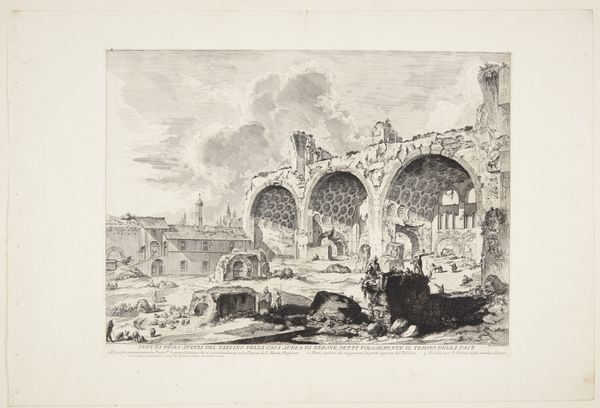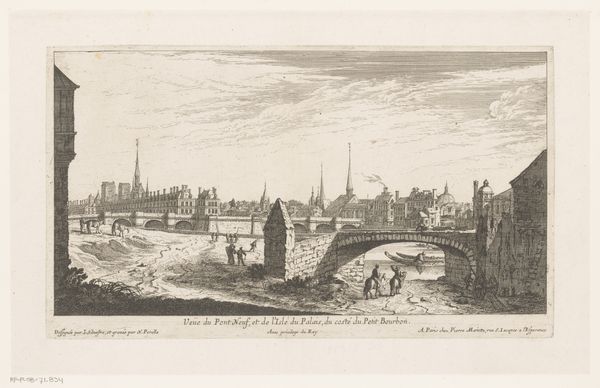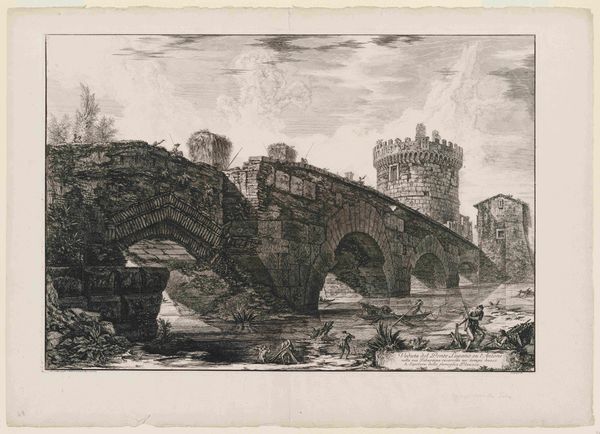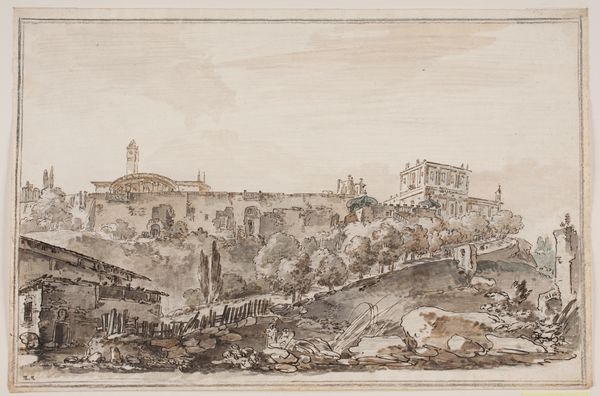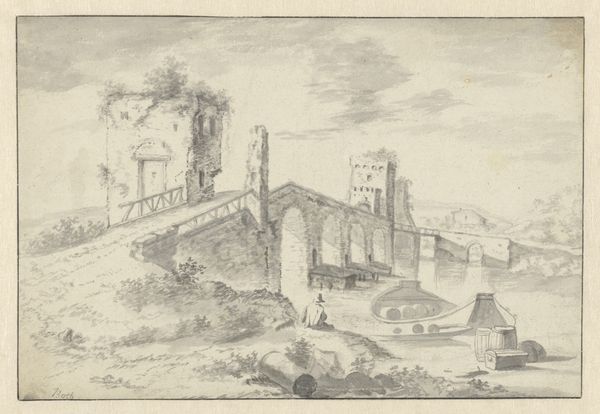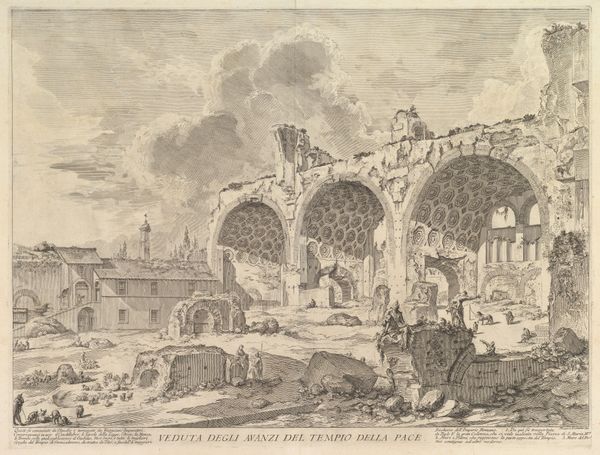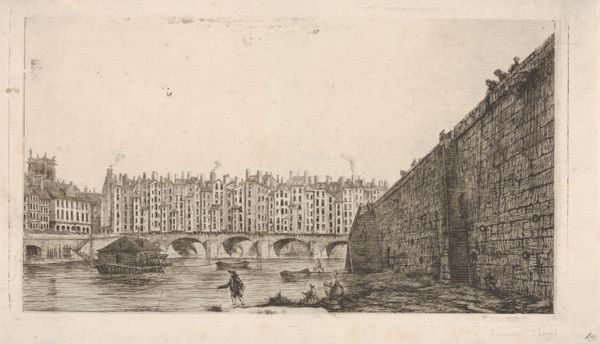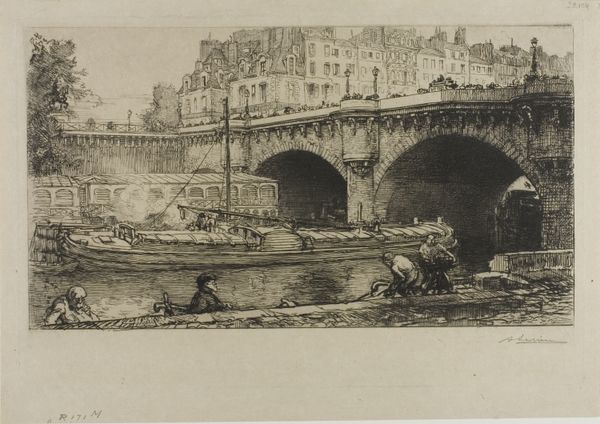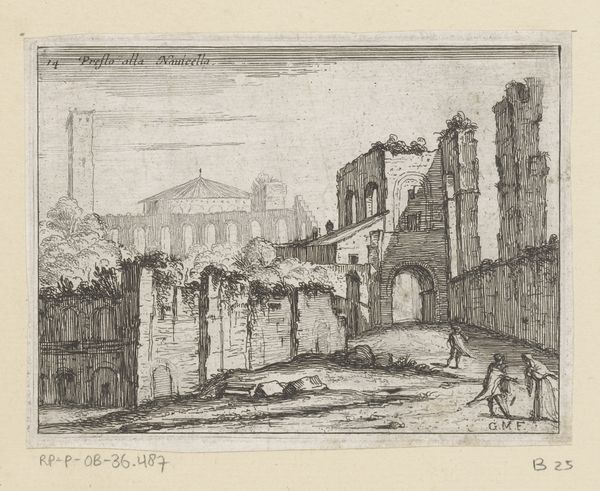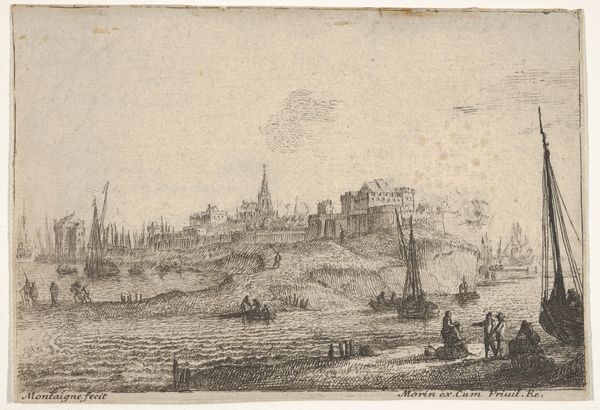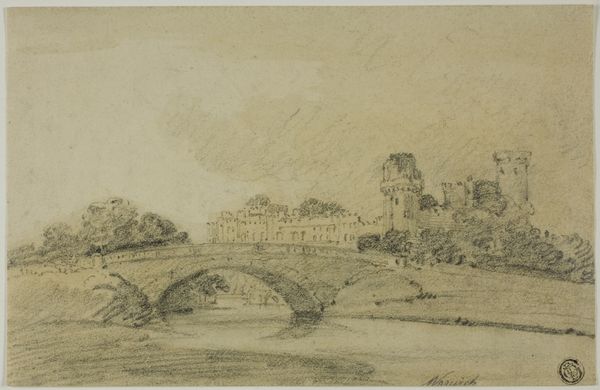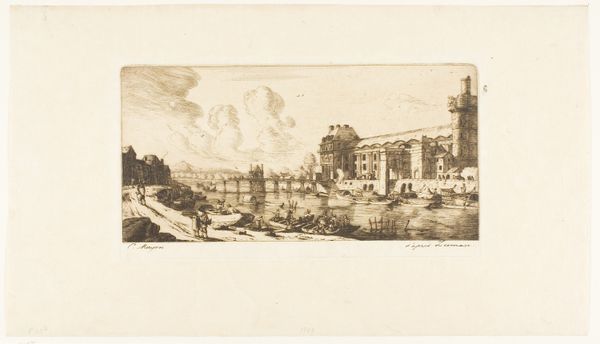
Gezicht op de kades langs de Seine bij de Pont St. Michel te Parijs 1842 - 1879
0:00
0:00
Dimensions: height 411 mm, width 285 mm
Copyright: Rijks Museum: Open Domain
Curator: Before us is Marinus van Raden's rendering, a drawing and etching from between 1842 and 1879, titled "Gezicht op de kades langs de Seine bij de Pont St. Michel te Parijs" or, "View of the Quays along the Seine at the Pont St. Michel in Paris". Editor: It’s evocative, capturing a slice of Parisian life. The tones are muted, lending it a timeless quality—almost ghostly, as if it’s a memory fading at the edges. Curator: Precisely. Note the focus on light and shadow; it evokes a sense of Romanticism blending seamlessly with a Realist portrayal of daily labor and urban infrastructure. Editor: What interests me is how this quiet, almost romantic, aesthetic belies the underlying structures of labor. Those horses pulling carts, the figures carrying loads... it subtly reminds us of the unseen workforce that builds and sustains these picturesque urban landscapes. There's a class tension barely visible within the overall harmonious composition. Curator: The choice of the Pont St. Michel as a subject is significant. Bridges, symbolically, are liminal spaces connecting different realms. It speaks to movement, transition, and the confluence of human experience. It unites the architectural prowess of Parisian civilization with the elemental reality of nature through its reflections on the waters of the Seine. Editor: Absolutely, but isn't the symbolism layered here? The bridge facilitates commerce, connecting different parts of the city and different socioeconomic classes even as we consider them unequal and apart from one another. We also must remember that drawings like this contributed to an idealised image of Paris used in marketing its rise as a capitalist center. Curator: Indeed, that inherent tension, the romantic veneer overlaying raw economic reality, contributes to the complexity of the image. We get a beautiful composition, with underpinnings of complex interactions between environment, labor and history, all unified into the artist’s rendering of that scene. Editor: So while the city radiates culture and progress, we must remind ourselves to see who ultimately subsidizes all its glamour, don’t you think? Curator: I’ll certainly walk away with that resonance. Thank you. Editor: Of course. Thanks for your reflections, too.
Comments
No comments
Be the first to comment and join the conversation on the ultimate creative platform.
